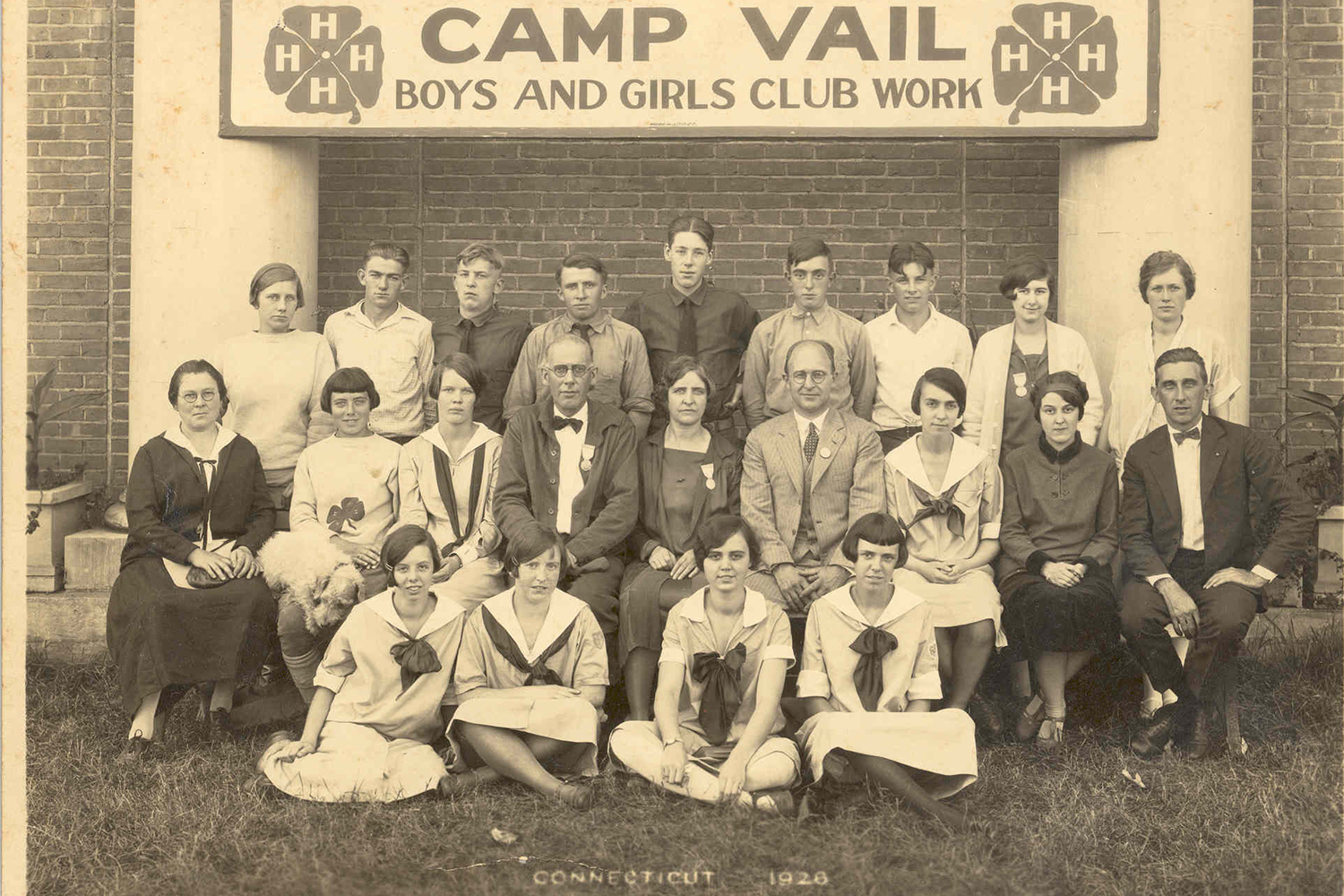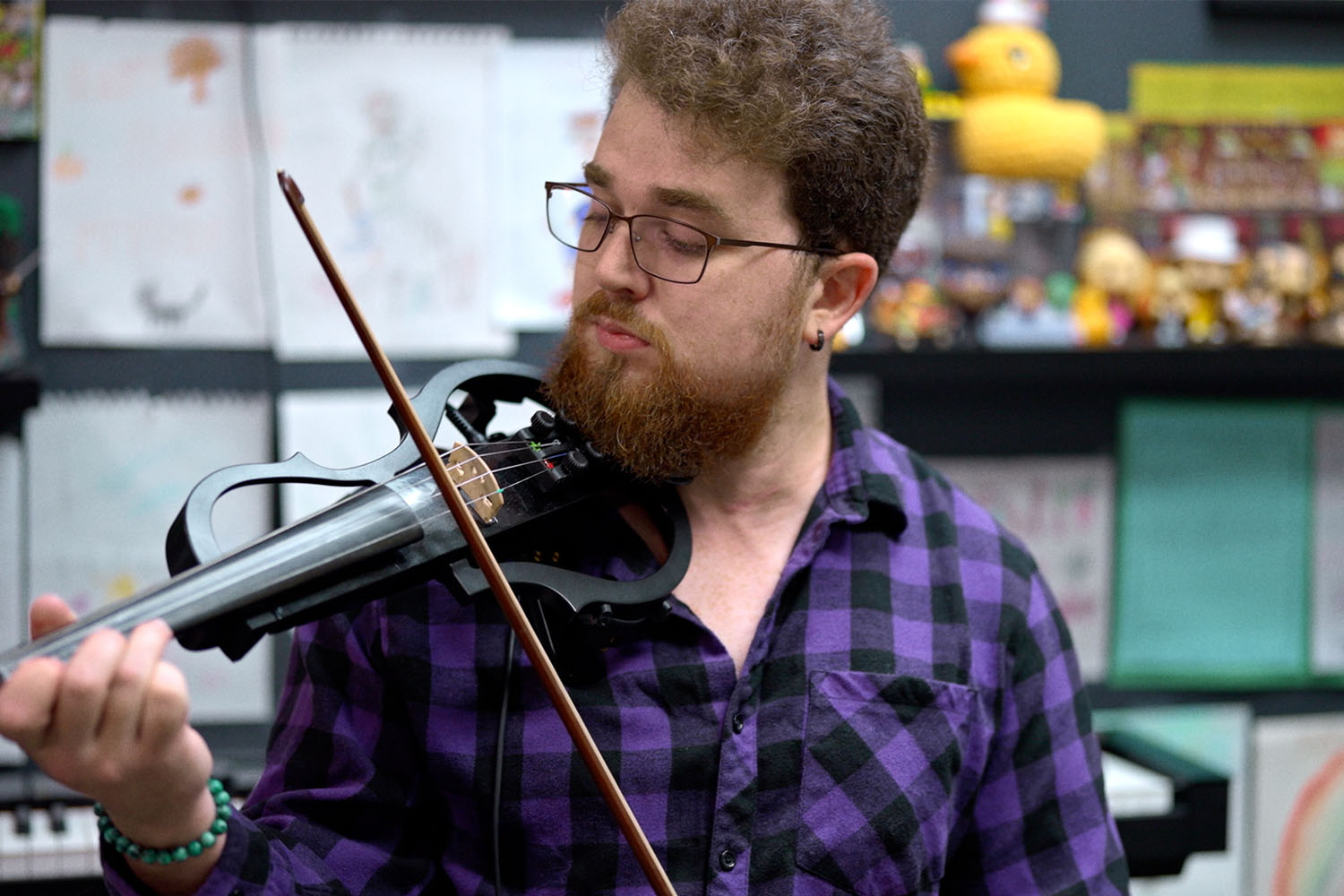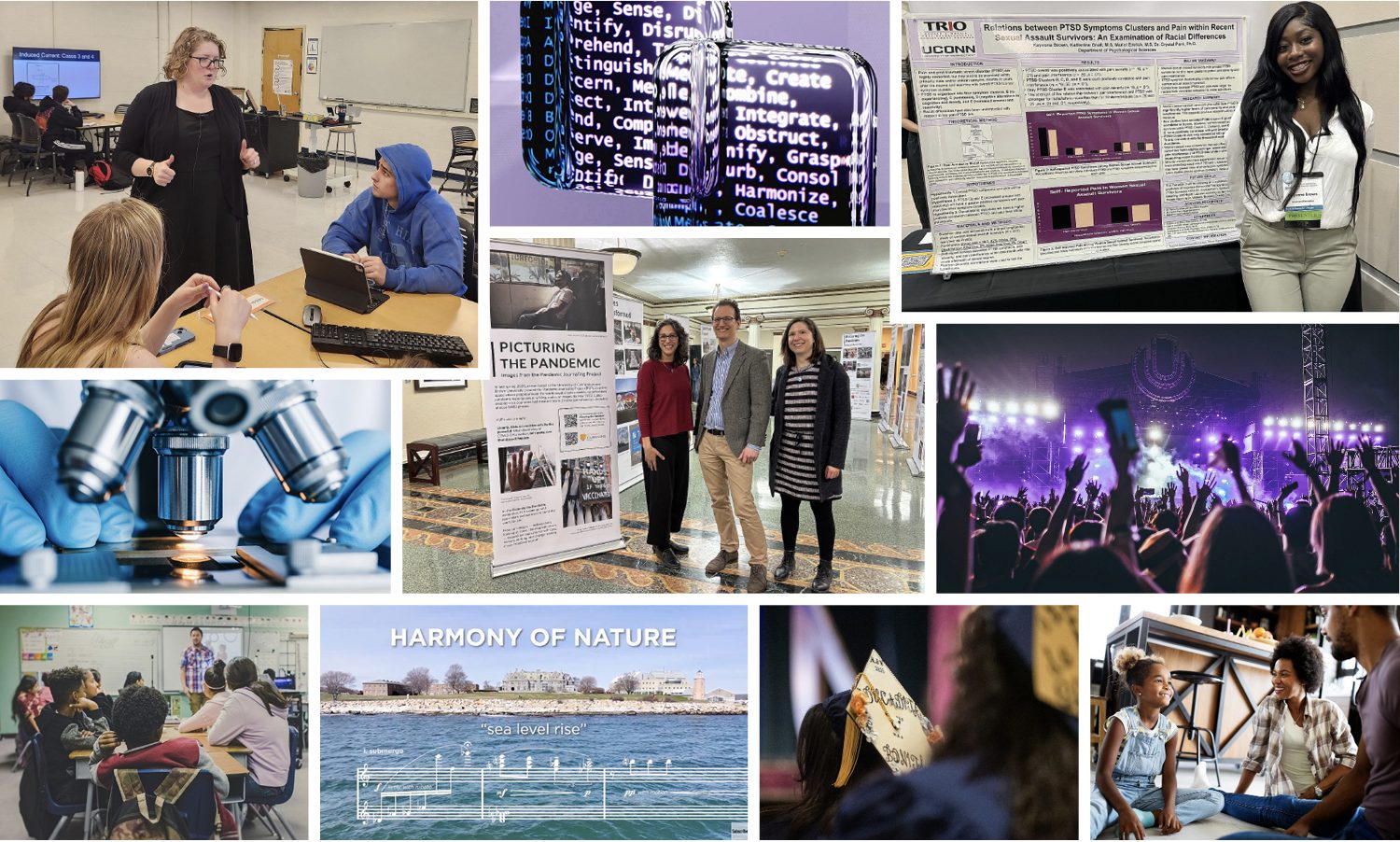By Sara Putnam.
Eastern States Exposition, or the Big E, as it is called, was established in 1916 in West Springfield, Massachusetts, with the goal of improving agriculture and highlighting the role it played in an increasingly industrializing world. J.L. Brooks, a Massachusetts businessman, founded the organization, which soon attracted support from all the New England states. In 1937, the Connecticut General Assembly allocated $35,000 for a building on the Avenue of New England States, which still stands as the Connecticut building. 4-H youth, leaders and 4-H agents who participated in myriad programs found overnight accommodations in the Moses Dormitory, which is still used during the operation of the exposition.
From the beginning, the Cooperative Extension System, faculty of the College of Agriculture, Health and Natural Resources and thousands of young people and adult volunteers contributed to the success and authenticity of the Big E. Camp Vail was the name given to 4-H activities. Open to 4-H members regardless of their project, the program offered sleeping quarters and meals for exhibitors. Over time 4-H participation evolved and expanded, with extensive participation in exhibiting sheep, dairy goats, dogs, horses, beef and dairy cattle programs. 4-H clubs demonstrated their projects in the arts and crafts building, including dress revues, public speaking and Double Dutch, a lively program of competitive jump rope that attracted large crowds, eager to watch the athletic skill of the participants as well as the music and rhymes that characterized the performances.



